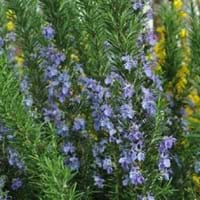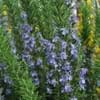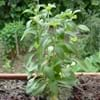Life Span
Perennial
Perennial
Type
Herbs
Bulb or Corm or Tuber
Origin
Southern Europe, Mediterranean
Hybrid origin
Types
Arp Rosemary, Gorizia Rosemary, Lockwood de Forest Rosemary, Salem Rosemary
boissieri , cupanii , hungaricum , kesselringii
Habitat
Dry areas, Open scrub
Temperate Regions
USDA Hardiness Zone
8-11
Not Available
AHS Heat Zone
12-8
Not Available
Sunset Zone
H1, H2, 4, 5, 6, 7, 8, 9, 10, 11, 12, 13, 14, 15, 16, 17, 18, 19, 20, 21, 22, 23, 24
21,22
Habit
Oval or Rounded
Clump-Forming
Flower Color
Blue Violet
Purple, Violet
Flower Color Modifier
Bicolor
Bicolor
Fruit Color
Not Available
Not Available
Leaf Color in Spring
Sea Green
Green
Leaf Color in Summer
Sea Green
Light Green
Leaf Color in Fall
Sea Green
Several shades of Green
Leaf Color in Winter
Light Green
Light Green
Leaf Shape
Needle like
Long Linear
Plant Season
Spring, Summer, Fall, Winter
Spring, Fall
Sunlight
Full Sun
Full Sun, Partial Sun
Type of Soil
Loam, Sand
Loam
The pH of Soil
Neutral, Alkaline
Acidic, Neutral
Soil Drainage
Well drained
Well drained
Bloom Time
Early Spring, Spring, Late Spring, Late Winter
Late Summer, Early Fall
Tolerances
Drought
Drought
Where to Plant?
Container, Ground, Pot
Ground
How to Plant?
Seedlings, Stem Planting
Divison, From bulbs, Seedlings
Plant Maintenance
Medium
Medium
Watering Requirements
Do not water frequently, Does not require lot of watering, It cannot sustain wet-feet, Never Over-water, Requires watering in the growing season, Water when soil is dry, when new, water every week
Keep ground moist
In Summer
Lots of watering
Lots of watering
In Spring
Moderate
Moderate
In Winter
Average Water
Average Water
Soil pH
Neutral, Alkaline
Acidic, Neutral
Soil Type
Loam, Sand
Loam
Soil Drainage Capacity
Well drained
Well drained
Sun Exposure
Full Sun
Full Sun, Partial Sun
Pruning
Prune for shortening long shoots, Prune if you want to improve plant shape, Prune regularly, Prune to control growth, Requires extensive pruning
no pruning required
Fertilizers
All-Purpose Liquid Fertilizer
All-Purpose Liquid Fertilizer
Pests and Diseases
Mealybugs, Powdery mildew, Root rot, Scale, Spider mites, Whiteflies
Dry root rot, Pest Free
Plant Tolerance
Drought
Drought
Flower Petal Number
Single
Single
Fragrant Bark/Stem
Yes
No
Foliage Texture
Fine
Coarse
Foliage Sheen
Matte
Glossy
Allergy
Skin rash, Vomiting
Poisonous to grazing animals
Aesthetic Uses
Beautification, Showy Purposes
along a porch, deck or patio, Borders, Mixed Border, small hedge
Beauty Benefits
Not Available
No Beauty Benefits
Environmental Uses
Air purification
Air purification
Medicinal Uses
Antioxidants, Cough, Gastrointestinal disorders, Heartburn, High blood pressure, Indigestion
anti rheumatic, cathartic
Part of Plant Used
Flowers, Leaves
Root
Other Uses
Air freshner, Oil is used for aromatherapy, Oil is used in perfume, soaps, creams, etc., Showy Purposes, Used as a spice
Showy Purposes
Used As Indoor Plant
Sometimes
No
Used As Outdoor Plant
Yes
Yes
Garden Design
Container, Edible, Hedges, Herb / Vegetable, Mixed Border, Topiary / Bonsai / Espalier
Container, Cutflower, Foundation, Lawns and Turf, Mixed Border
Botanical Name
ROSMARINUS officinalis 'Tuscan Blue'
COLCHICUM 'Lilac Wonder'
Common Name
Rosemary, Tuscan Blue Rosemary
Hybrid Autumn Crocus, Hybrid Meadow Saffron
In Hindi
टस्कन ब्लू दौनी
meadow saffron
In German
Tuscan Blau Rosmarin
Herbstzeitlose
In French
Toscane Bleu Rosemary
Colchique d'automne
In Spanish
Toscana azul Romero
Estado de conservación
In Greek
Τοσκάνης Μπλε Rosemary
meadow saffron
In Portuguese
Tuscan Azul Rosemary
Colchicum autumnale
In Polish
Toskańskie Niebieski Rosemary
Colchicum autumnale
In Latin
Tusci Rosemary blue
autumnale
Phylum
Magnoliophyta
Tracheophyta
Class
Magnoliopsida
Magnoliopsida
Family
Lamiaceae
Liliaceae
Genus
Rosmarinus
Colchicum
Clade
Not Available
Angiosperms, Monocots
Tribe
Not Available
Not Available
Subfamily
Not Available
Not Available
Number of Species
Not Available
Season and Care of Tuscan Blue Rosemary and Meadow Saffron
Season and care of Tuscan Blue Rosemary and Meadow Saffron is important to know. While considering everything about Tuscan Blue Rosemary and Meadow Saffron Care, growing season is an essential factor. Tuscan Blue Rosemary season is Spring, Summer, Fall and Winter and Meadow Saffron season is Spring, Summer, Fall and Winter. The type of soil for Tuscan Blue Rosemary is Loam, Sand and for Meadow Saffron is Loam while the PH of soil for Tuscan Blue Rosemary is Neutral, Alkaline and for Meadow Saffron is Acidic, Neutral.
Tuscan Blue Rosemary and Meadow Saffron Physical Information
Tuscan Blue Rosemary and Meadow Saffron physical information is very important for comparison. Tuscan Blue Rosemary height is 150.00 cm and width 60.00 cm whereas Meadow Saffron height is 12.70 cm and width 20.30 cm. The color specification of Tuscan Blue Rosemary and Meadow Saffron are as follows:
Tuscan Blue Rosemary flower color: Blue Violet
Tuscan Blue Rosemary leaf color: Sea Green
Meadow Saffron flower color: Purple and Violet
- Meadow Saffron leaf color: Green
Care of Tuscan Blue Rosemary and Meadow Saffron
Care of Tuscan Blue Rosemary and Meadow Saffron include pruning, fertilizers, watering etc. Tuscan Blue Rosemary pruning is done Prune for shortening long shoots, Prune if you want to improve plant shape, Prune regularly, Prune to control growth and Requires extensive pruning and Meadow Saffron pruning is done no pruning required. In summer Tuscan Blue Rosemary needs Lots of watering and in winter, it needs Average Water. Whereas, in summer Meadow Saffron needs Lots of watering and in winter, it needs Average Water.





